Rattlesnake Plantain (Goodyera) Profile
Written by Iris
Oct 14 2021
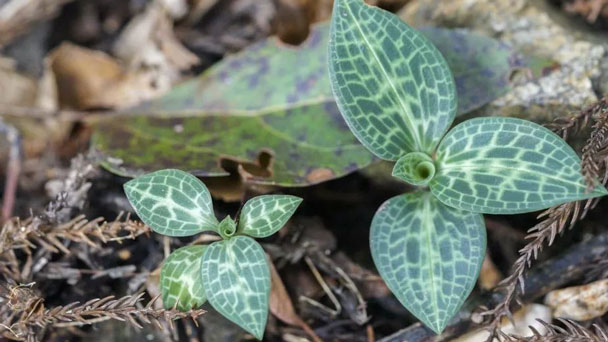
Rattlesnake Plantain is a perennial evergreen herb of the orchid family native to dry woodlands, cliffs, wooded hillsides, and wooded ravines. The white leaf markings of Rattlesnake Plantain resemble the skin of certain rattlesnake, and the flower stems are covered with fluff, hence the common name of soft rattlesnake plantgrass.Rattlesnake Plantain was named wildflower of the Year 2016.
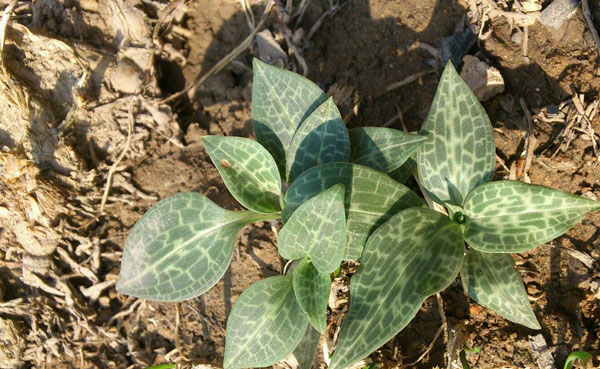
Rattlesnake Plantain is suitable for light (sandy) and medium (loamy) soils and prefers well-drained soil. The suitable pH is acid, neutral and basic (alkaline) soils. rattlesnake plantain can grow in semi-shade (light woodland) or no shade. Rattlesnake Plantain prefers dry or moist soil.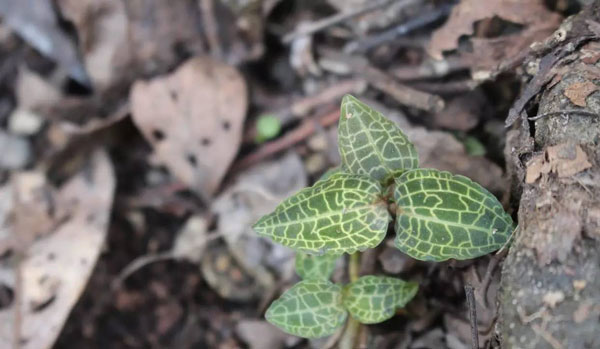
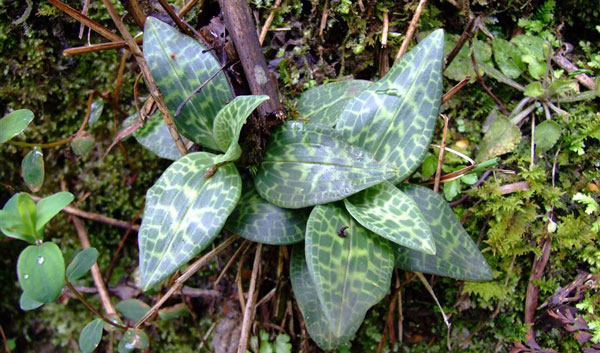
Variegata is generally divided into branches in spring and autumn. Each clump must have 5 connected pseudocorms. Then insert it into the prepared soil and water it thoroughly to ensure that the soil is moist. During the period, reduce watering and keep it in a cool place. It will take about 10-15 days to take root.
Temperature and Humidity
Temperature requirements vary with individual growing areas of each species. But in general, many guyera plants prefer milder temperatures. They also like moderate humidity levels and can handle high humidity if there is good air circulation around the plants. They should be protected from strong winds, which can dry out and damage leaves.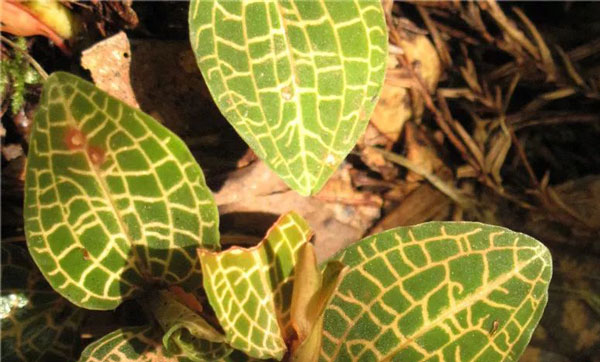
A tea made from the roots is used in the treatment of pleurisy and snakebites. A tea made from the leaves is taken to improve the appetite, as a treatment for colds, kidney ailments, rheumatism and toothaches. Externally, a poultice of the wilted leaves is used to cool burns, treat skin ulcers and relieve rheumatic joints. An ooze from the plant (this probably means the sap or the juice of the bulb) has been used as eye drops to treat sore eyes.
You might want to recover with a poultice of softened leaves for cuts and wounds or relax in a hot bath with an infusion of leaves to treat stiff muscles. As with all wild plants, discretion, respect, and proper harvesting protocols must be followed with each respective management agency.
Goodyera oblongifolia: Also known as the western rattlesnake plantain, this orchid has blue-green foliage and blooms profusely with small white flowers.
Goodyera pubescens: Known as the downy rattlesnake plantain, this plant has blue-green leaves with white markings and a flower stalk with downy hairs.
Goodyera repens: This species is called the dwarf rattlesnake plantain and typically grows less than a foot tall.
Goodyera tesselata: Commonly referred to as the checkered rattlesnake plantain, this orchid features green foliage with white markings that give it a checkered look.
Rattlesnake Plantain PictureRattlesnake Plantain infoEcological habits of the Rattlesnake PlantainRattlesnake Plantain Distribution AreaHow to grow and care for Rattlesnake PlantainHow to Grow Rattlesnake Plantain (Goodyera)How to Care for Rattlesnake Plantain (Goodyera)Uses of Rattlesnake PlantainMedicial UsesLandscape UsesVarieties of Rattlesnake Plantain
Rattlesnake Plantain Picture

Rattlesnake Plantain info
| Botanical Name | Goodyera |
| Common Names | Rattlesnake plantain, jade orchid |
| Plant Type | Perennial |
| Mature Size | 1–2 ft. tall and wide (on average) |
| Sun Exposure | Partial |
| Soil Type | Rich, moist, well-drained |
| Soil pH | Acidic, neutral |
| Bloom Time | Summer, fall |
Ecological habits of the Rattlesnake Plantain
Rattlesnake Plantain is an evergreen Perennial growing to 0.4 m (1ft 4in) at a medium rate. It is hardy to zone (UK) 6. It is in leaf all year, in flower from July to August. The species is hermaphrodite (has both male and female organs) and is pollinated by Insects.Rattlesnake Plantain is suitable for light (sandy) and medium (loamy) soils and prefers well-drained soil. The suitable pH is acid, neutral and basic (alkaline) soils. rattlesnake plantain can grow in semi-shade (light woodland) or no shade. Rattlesnake Plantain prefers dry or moist soil.

Rattlesnake Plantain Distribution Area
Rattlesnake plantain (Goodyera oblongifolia) is a terrestrial perennial monocot in the orchid family, Orchidaceae, rising from a fibrous rhizome. The genus, Goodyera, occurs worldwide, but is primarily in Southeast Asia. In the western hemisphere, there are 16 species and in North America, it narrows to only four. Finding our less common rattlesnake plantain is a victory. Across North America, it can be found in both coniferous forests and mixed woodlands. According to Jacquelyn A. Kallunki in her treatment of Goodyera in the Flora of North America; in eastern North America, rattlesnake plantain is less common in low elevation cedar swamps but is more commonly spotted in formerly glaciated areas. Along the backbone of North America (the Rocky Mountains), it is often located in high-elevation spruce-fir forests. Look for it to bloom between mid-July and mid-September. Even though it is not abundant, rattlesnake plantain is widespread throughout North America extending from Canada and Alaska in the north, to Mexico in the south.
How to grow and care for Rattlesnake Plantain
How to Grow Rattlesnake Plantain (Goodyera)
With DivisionVariegata is generally divided into branches in spring and autumn. Each clump must have 5 connected pseudocorms. Then insert it into the prepared soil and water it thoroughly to ensure that the soil is moist. During the period, reduce watering and keep it in a cool place. It will take about 10-15 days to take root.
How to Care for Rattlesnake Plantain (Goodyera)
- Light
- Soil
- Water
Temperature and Humidity
Temperature requirements vary with individual growing areas of each species. But in general, many guyera plants prefer milder temperatures. They also like moderate humidity levels and can handle high humidity if there is good air circulation around the plants. They should be protected from strong winds, which can dry out and damage leaves.
- Fertilizer

Uses of Rattlesnake Plantain
Medicial Uses
Rattlesnake Plantain act as medicinal and therapeutic treatments for tuberculosis, paralysis, stomach disorders, chest pain, arthritis, syphilis, jaundice, cholera, acidity, eczema, boils, and inflammations.A tea made from the roots is used in the treatment of pleurisy and snakebites. A tea made from the leaves is taken to improve the appetite, as a treatment for colds, kidney ailments, rheumatism and toothaches. Externally, a poultice of the wilted leaves is used to cool burns, treat skin ulcers and relieve rheumatic joints. An ooze from the plant (this probably means the sap or the juice of the bulb) has been used as eye drops to treat sore eyes.
You might want to recover with a poultice of softened leaves for cuts and wounds or relax in a hot bath with an infusion of leaves to treat stiff muscles. As with all wild plants, discretion, respect, and proper harvesting protocols must be followed with each respective management agency.
Landscape Uses
Border, Ground cover, Massing. Requires a somewhat shady site and a well-drained compost of peat, leafmold and sand. Does well in the woodland garden. Orchids are, in general, shallow-rooting plants of well-drained low-fertility soils. Their symbiotic relationship with a fungus in the soil allows them to obtain sufficient nutrients and be able to compete successfully with other plants. They are very sensitive to the addition of fertilizers or fungicides since these can harm the symbiotic fungus and thus kill the orchid. This species is closely related to the British native species, G. repens. This plant is too rare in the wild to be harvested.Varieties of Rattlesnake Plantain
The North American Goodyera species that commonly use the name rattlesnake plantain include:Goodyera oblongifolia: Also known as the western rattlesnake plantain, this orchid has blue-green foliage and blooms profusely with small white flowers.
Goodyera pubescens: Known as the downy rattlesnake plantain, this plant has blue-green leaves with white markings and a flower stalk with downy hairs.
Goodyera repens: This species is called the dwarf rattlesnake plantain and typically grows less than a foot tall.
Goodyera tesselata: Commonly referred to as the checkered rattlesnake plantain, this orchid features green foliage with white markings that give it a checkered look.
Latest Updated
- Benefits of Bugleweed - 7 Science-backed Health Benefits
- Bugleweed Dangers & Side Effects - Is It Poisonous?
- How to Plant Evergreen Trees - What You Should Know
- When to Plant Evergreens - Grow Guide for Evergreen Trees
- 12 Wonderful Evergreen Shrubs for Your Garden
- 12 Popular Evergreen Plants with Pictures for Beginners
- When And How To Prune A Lilac Bush Like a Pro
- How to Grow & Care for Lilac Vine (Hardenbergia Violacea)
- Japanese Lilac Tree (Syringa Reticulata) Care & Propagation Guide
- Shumard Oak Pros and Cons - What to Know
Popular Articles
- Winter maintenance of Antirrhinum Majus
- How to Grow Terminalia Mantaly Tree
- How to Grow and Care for Crossostephium Chinense
- How to grow Antirrhinum Majus in spring
- Peristeria Elata (Dove Orchid) Profile: Info & Care Guide
- Underwatered Snake Plant (Sansevieria Trifasciata) - Signs And How To Fix
- How to Care for Brazilian Jasmine Plant (Mandevilla Sanderi)
- How to Grow & Care for Graptopetalum Purple Delight in Summer
- Rosa Chinensis (China Rose): Plant Growing & Care Tips
- How to Care for Baby Sun Rose (Aptenia Cordifolia)